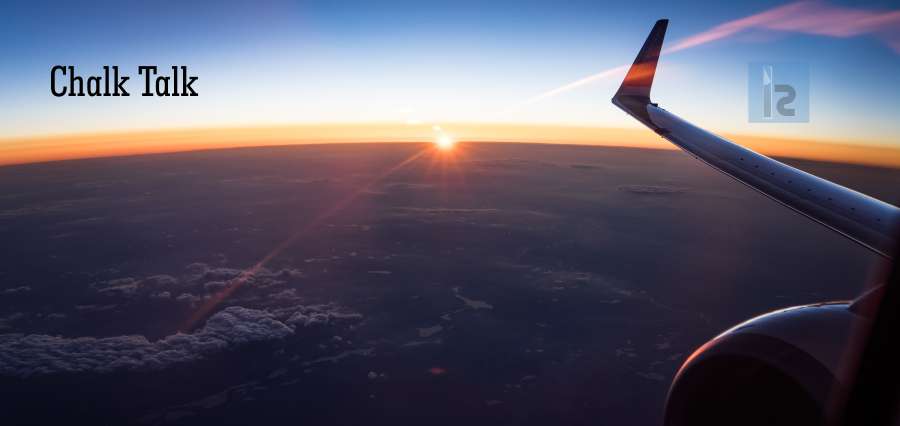Aviation plays a significant role in modern socio-economies, providing better connectivity and accessibility, and facilitating commerce. It connects people and cultures all over the world. Airports now no longer simply comprise aviation related functionalities but they have evolved to include more than that. The industry is always looking for new approaches to adopt emerging technologies into their organisations in order to improve both the customer experience and internal operations. Several airlines have started using unique approaches and technology to shape the future of the industry.
Biometrics
The finger print and facial scanning technology at airport enables speedy as well as easy security check. Moreover, it may eventually eliminate the need for a boarding pass. The technology works by integrating with the airport’s infrastructure, taking the passenger details through a quick facial and finger print scan when they enter the airport. It creates a secure virtual token of their face and finger prints which can help the passenger throughout the process involved from airport to final arrival on plane. This system ensures that the travellers are using the genuine passport and not forged documents by matching existing photographs from passports or images collected.
Airport Robots
Connected to the airport’s main server, the Airport Guide Robots can answer guests’ inquiries, and show flight schedules and maps of the airport via a screen. These robots can answer traveller questions in English, Japanese, Chinese and more different languages. They work as guides for passengers, self-driving baggage carts and much more. The robots can also scan a passenger’s ticket and provide information about their boarding time and gate location. Whenever required, the robot can guide lost or late travellers to their flight door or any other airport location. Likewise, cleaning robots can keep the air terminal clean and detects the areas that require the most frequent cleaning.
Artificial Intelligence
AI can analyse a huge amount of data to anticipate future results, for example, client’s baggage fees, seating inclinations, and different facilities, based on their history. It may soon start using for enhancing airport/aircraft planning, design, and smooth administrative processes. AI based machines have the capacity to track bags from the point of a traveller checking in to their destination without human interaction. It can be applied to improve pricing strategies, increase customer engagement, and improve the overall flight experience. Behaviour-tracking techniques, metadata, and purchase history enable making exceptionally customised offers to customers, increasing retention and a client’s lifetime value.
Premium Economy
Today, some of the airlines offer a fourth class-premium economy, the choice of a premium seat on longer flights. These seats differs from standard economy, in which travellers can normally expect more leg room, premium food and drink options and superior in-flight entertainment. The premium economy seats now offer features such as support for laptops and Wi-Fi connectivity options that enable in-flight working. Ten years back business class looks like a five star and rendering royal services, is premium economy ready to nudge out business as the go-to choice for median-earning travellers? Yes, it will encourage customers who fell somewhere between economy and upper class to buy up to a better flight experience, while remaining budget savvy. Several airlines consider premium economy is appealing and have introduced attractive options for the middle class flyer.
Virtual Reality
In the modern world, everything from entertainment to shopping is using VR technologies. The airline industry is not exempt from these changes. This technology informs travellers about interior of the aircraft during booking process. It makes seat selection process more accurate for the passengers. By showcasing them sample premium seats using VR glasses, there is better possibility that passenger can upgrade from economy to premium economy. VR technology offers some exciting potential for the airline industry as a whole.
Green Airports
Green aviation is the quest for the reduction in noise, greenhouse gas emissions, and fuel utilization. Airports are increasingly focusing now on generating energy from renewable sources and improving energy management solutions. Green Airports embraces opportunities and managing risks derived from economic, environmental and social developments. The Airline industry is also responsible for generating pollution in the space. Airplanes are also responsible for noise pollution .The new development to produce quieter engines through acoustic liners and the optimization of fan, turbine and compressor construction which are able to reduce engine noise significantly. Today, the aviation industry is looking for alternatives to conventional oil, green jet fuel, ethanol, and even bio-kerosene in order to identify better techniques of powering aircraft.
In this digital transformation, technology is set to become part of daily life within all industries. Airlines must begin to embrace technology advances to improve their current services and products as well as to gain a competitive advantage before they are deserted in the digital dust. Today customers need frictionless, seamless shopping experience that gives them expansive yet personalized offerings. Digital applications are expected to provide new opportunities to win customers, save energy, improve safety and higher margins. The world of aviation continues to unlock the many opportunities brought by digital innovation.


